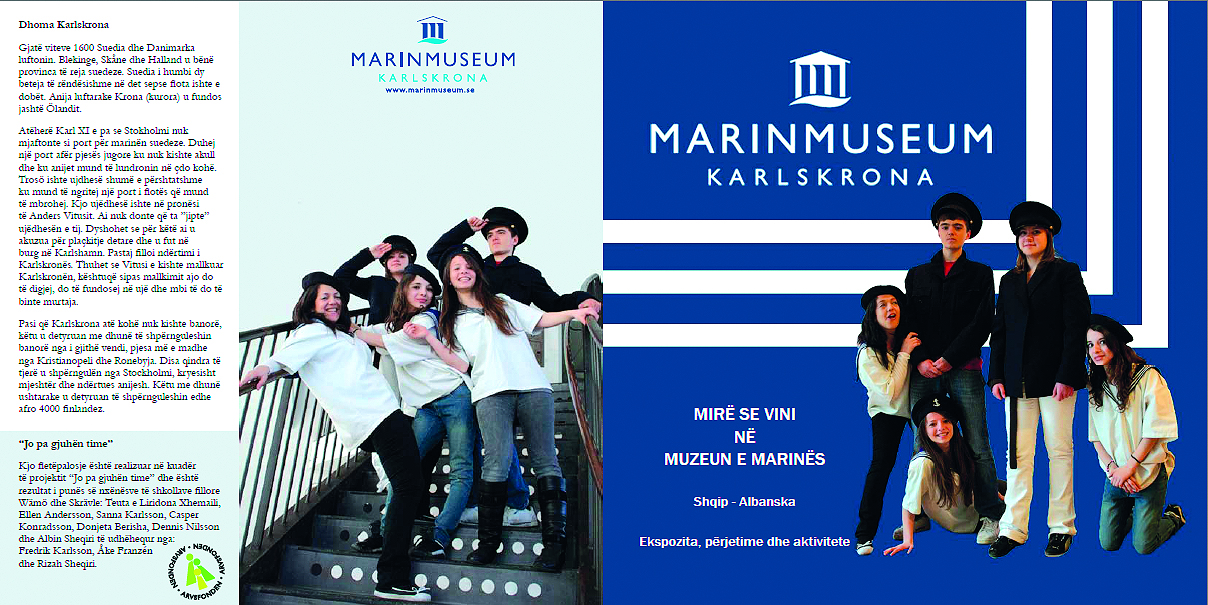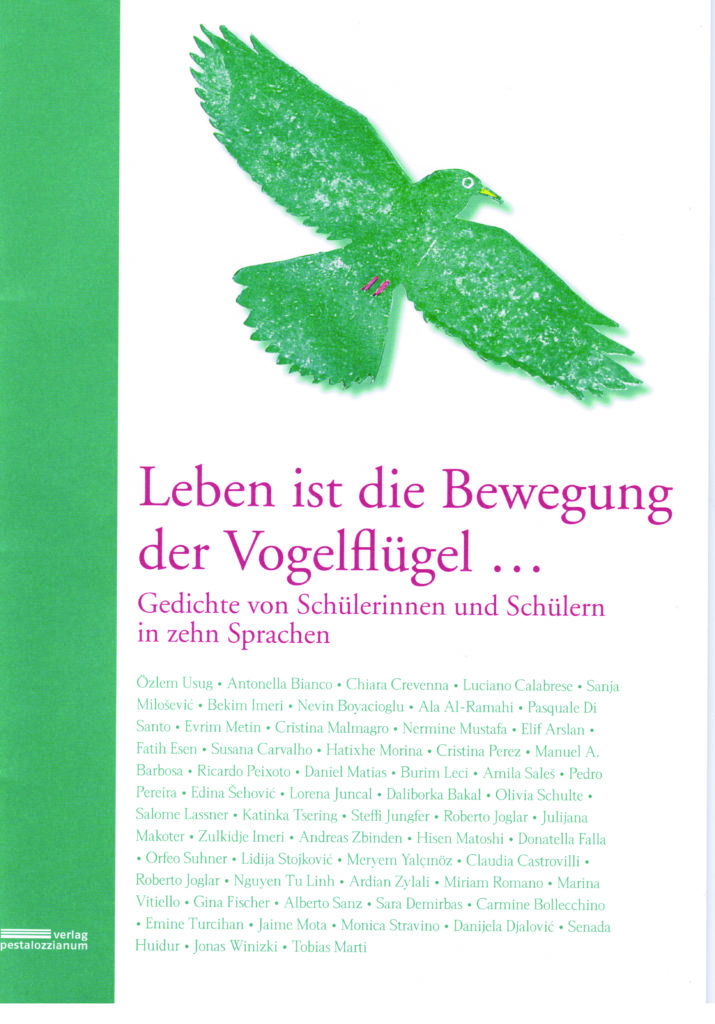1. Renate Neubauer, Hazir Mehmeti: The project “Ateliers” of the European Elementary School Goldschlagstrasse in Vienna
Renate Neubauer is from Austria. She has been living in Vienna for 40 years where she has taught for 21 years.
Hazir Mehmeti hails from Kosovo/Kosova. He has been living in Vienna for 17 years, and has worked as HLT instructor of Albanian in various schools since 1999.
Our school is located in the fifteenth district of Vienna. Those who are somewhat familiar with Vienna may know that the belt separates the inner (more expensive) districts from the outer (somewhat) cheaper residential areas. Many migrants took advantage of the substandard housing on the belt (long since disallowed) where many persons live in tight quarters for little rent. Our demographic area was therefore always multilingual. In order to make the location of our school more appealing and to avoid a ghettoization, we needed an attractive solution. Thus originated the concept of the “European Elementary School”: a native English speaker teaches 3-5 times per week English as a working language in the classes. The concept has been successful. English in elementary school attracted interested parents from all languages and social strata and also ensured a blending of the student body make-up. Following a change in school management nine years ago, the director instituted a school development team. They made it their goal to widen the focus and direct their attention not only on English, but also the many mother tongues of our students, as well as to better utilize existing resources.
The team and the native language teachers first developed the plan of language workshops (ateliers) in order to give all languages equal status.
The next consideration was what it would take to bring the prestige-deficient migration languages up to approach the image-level of English. First: the teachers of native language education classes should be known to all students. Thus, they present themselves each year in the new workshop classes (2nd grade) and present their home country, including something cultural, and generate students‘ desire to learn more about it. Children are invited to these workshops whose first language is not the „ateliers“ target language.
The idea, therefore, is to introduce students to foreign languages as languages that their schoolmates speak, in order to remove the foreign from the foreign language.
Folders are provided in the classes to collect materials, worksheets, pictures, lyrics to songs, etc., designed to create a particular type of memories. For instance, in the atelier for French, croissants were backed and distributed to the classmates for tasting. The folders contain only pictures of the delicacy, but the aroma comes back when looking at the pictures even years later!
We estimated four weeks for a round of ateliers. In these six units (at 1–2 lessons), children learn to recognize the sound of the language, they learn how to count, express greetings and a few elementary phrases, etc. They learn something about the country, hear what the songs sound like, and perhaps learn a nursery rhyme. They are not learning to speak the language for sure, which is not the goal at all. We discussed for a long time if we should offer a language course in the afternoon for seriously interested children, but it would seem that although the children are very much interested in getting to know the culture, they are mostly unable to decide on one language which they now would want to learn systematically.
The atelier programs take place every Thursday morning from the second to the fourth class. Courses for advanced students were created for the fourth class, such that students could take away something new, even though they may repeat an atelier. The language offerings depend on the native language teachers, as we only want native speakers as instructors. At present we offer the following languages in the ateliers: Albanian, Arabic, Bosnian/Croatian/Serbian, Spanish, Portuguese, Czech/Slovak, Turkish, Hungarian.
Pursuant to each cycle, there is a meeting of the involved instructors, in which questions or new ideas are discussed. In a parallel process, a mixed taskforce deals with the development of a curriculum for ateliers, which may benefit most of all the newcomers.
Link: http://www.evsgoldschlagstrasse.at
2. Sunnadal School, Karlskrona; Rizah Sheqiri: The project “Not without my language“ of the Sunnadal school and the Naval Museum in Karlskrona/Sweden
The Sunnadal school is attended by about 400 students from kindergarten to the 9th grade, the majority of whom does not speak Swedish as their first language.
Link: https://www.karlskrona.se/sv/Grundskolor/Sunnadalskolan
Rizah Sheqiri hails from Kosovo/Kosova. He lives in Sweden and has served as HLT instructor of Albanian in Karlskrona since 1995.
“Not without my language” is a successful cooperation project between the Sunnadal school (where native language education is fully integrated in the curriculum) and the Naval Museum in Karlskrona. The goal of this project is to raise the status of mother tongues through various forms of extracurricular learning.
As a first sub goal we decided to train “mini tourist guides” for guided visits to the museum in various languages. This way, language and cultural bridges would have to be built and the culture and history of Karlskrona would be mediated for members of other cultures in their language (first perhaps the family members of our students).
This concept was primarily developed by the six participating HLT instructors, who then proposed that HLT collaborate with the educators of the museum. The HLT instructors were simultaneously an important link between the school, the museum, and the parents. In order to meet these challenges, the teachers first trained to become museum guides themselves and then created a brochure in different languages as a resource for the students who would henceforth become mini-museum guides.
An interesting aspect of this project was and is that it relates the utilization of the language of origin in an authentic, extracurricular context with an important cultural institution in the city. The project does not replace HLT classes, of course, which are integrated into the regular school time table); it represents rather a complement and a revaluation of those classroom efforts.
Meanwhile, some 20 students from the Albanian community have already been trained as “mini-museum guides”. In addition, four of them have been assisting with the editing of an Albanian museum brochure. Contents, illustrations and design of this brochure were created together with the students of other groups and the Swedish colleagues.
The project evaluation by the museum educators, HLT and Swedish teachers was extremely positive. According to an HLT instructor, the project contributed substantially to a better cross-linkage between school, parents, city, cultural institutions and opportunities, and therefore also to integration.

3. Urs Loppacher, Nexhat Maloku: A pioneer project: The collection of poems “Life is the movement of birds‘ wings…”
Urs Loppacher taught secondary school classes from 1975–1998 in district 5 of the city of Zurich, which has a high proportion of students from immigrant families.
Nexhat Maloku hails from Gjilan (Kosovo/Kosova). He has been living in Zürich since 1991, where he has served as HLT instructor for Albanian since 1992.
The project described below “Life is the movement of birds‘ wings… poems by students in ten languages” is a cooperative pioneer project between heritage language education and regular classroom education. It dates from the happy time of a pilot project in the 1990’s where in the culturally and linguistically very heterogeneous school building Limmat A, heritage language education was firmly integrated with regular classroom instruction (see the scientific evaluation in the internet under the heading integrated approach – courses in heritage language education and culture: “Integrierter Fachbereich – Kurse in heimatlicher Sprache und Kultur im Oberstufenschulhaus Limmat A”).
During those years, all secondary school students had to attend HLT in their language of origin. Swiss students attended a Swiss course, and a special international course was created for the small groups who did not have their own HLT.
A common intercultural project was implemented every year in close collaboration between teachers of regular classes and HLT instructors. This was ultimately presented to the parents, all teachers, and sometimes to the interested public as well.
The theme of the project for the academic year 1996/1997 was “writing poems”. The students wrote poems, first in their mother tongue, and they were then translated into German with assistance of the teachers.
In the context of the poetry project, students‘ first language competences were applied in various ways: reading poetry, discussing poems, creating their own poems. Most of all, students experienced how they can express differentiated emotions in their first language, they learned new words and thereby appreciated their mother tongue as an important and valuable resource.
As a fitting and particularly motivating end to the project, the created poems were then collected and published with the help of sponsors in a beautifully designed publication and with a real publisher. “Life is the movement of birds‘ wings …” is comprised of poems in eleven languages: Albanian, Arabic, Bosnian, German, Italian, Portuguese, Swiss German, Serbian, Spanish, Turkish, Vietnamese; in each case with a German translation. A literary evening was organized and held at the end of the school year in the presence of many parents, teachers and other interested groups. The booklet meanwhile is already in the third edition and available through (Verlag Pestalozzianum, Zürich; ISBN 3-03755-044-9).

The project shows in an exemplary way the kinds of valuable results the collaboration of HLT instructors and regular classroom teachers can produce. What is only indirectly ascertained from the publication is the great pleasure, the immense commitment, and the good atmosphere which characterized the work on this beautiful cooperative project.






